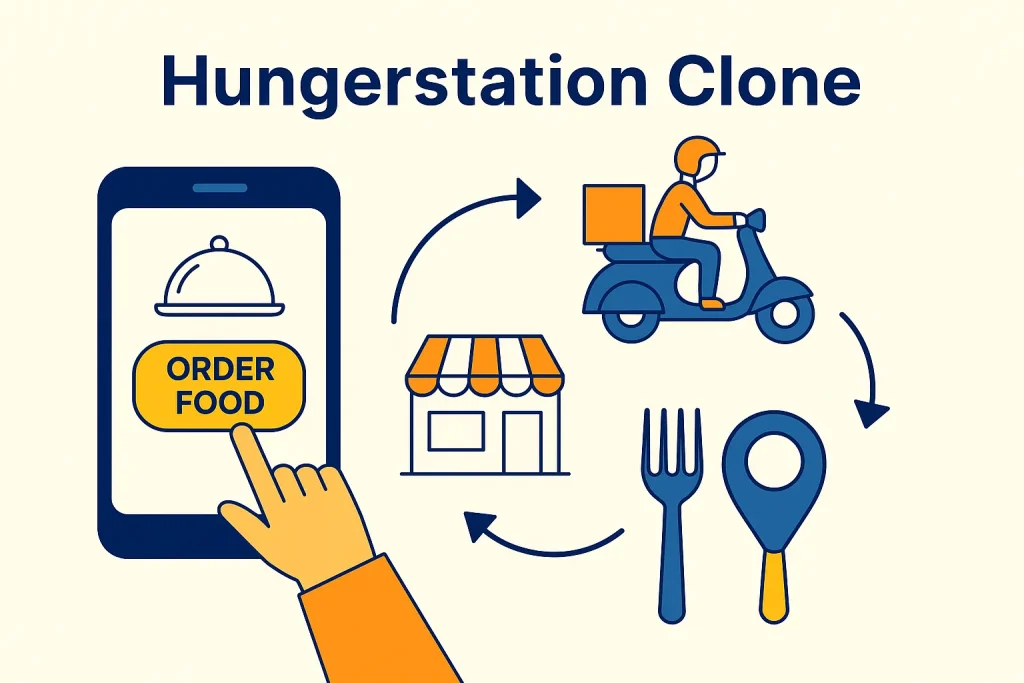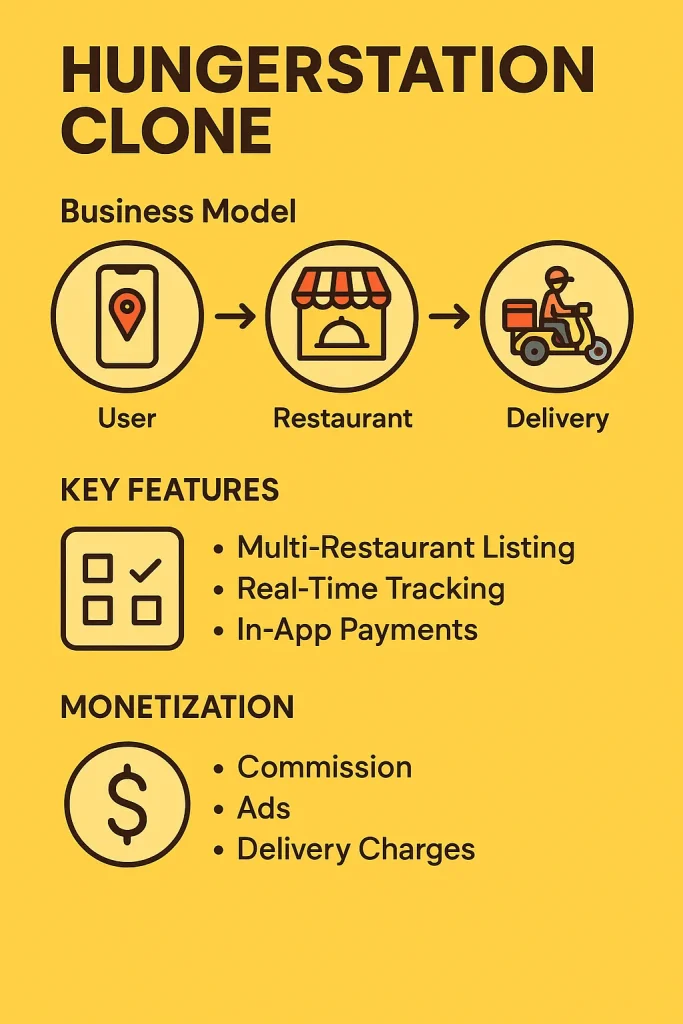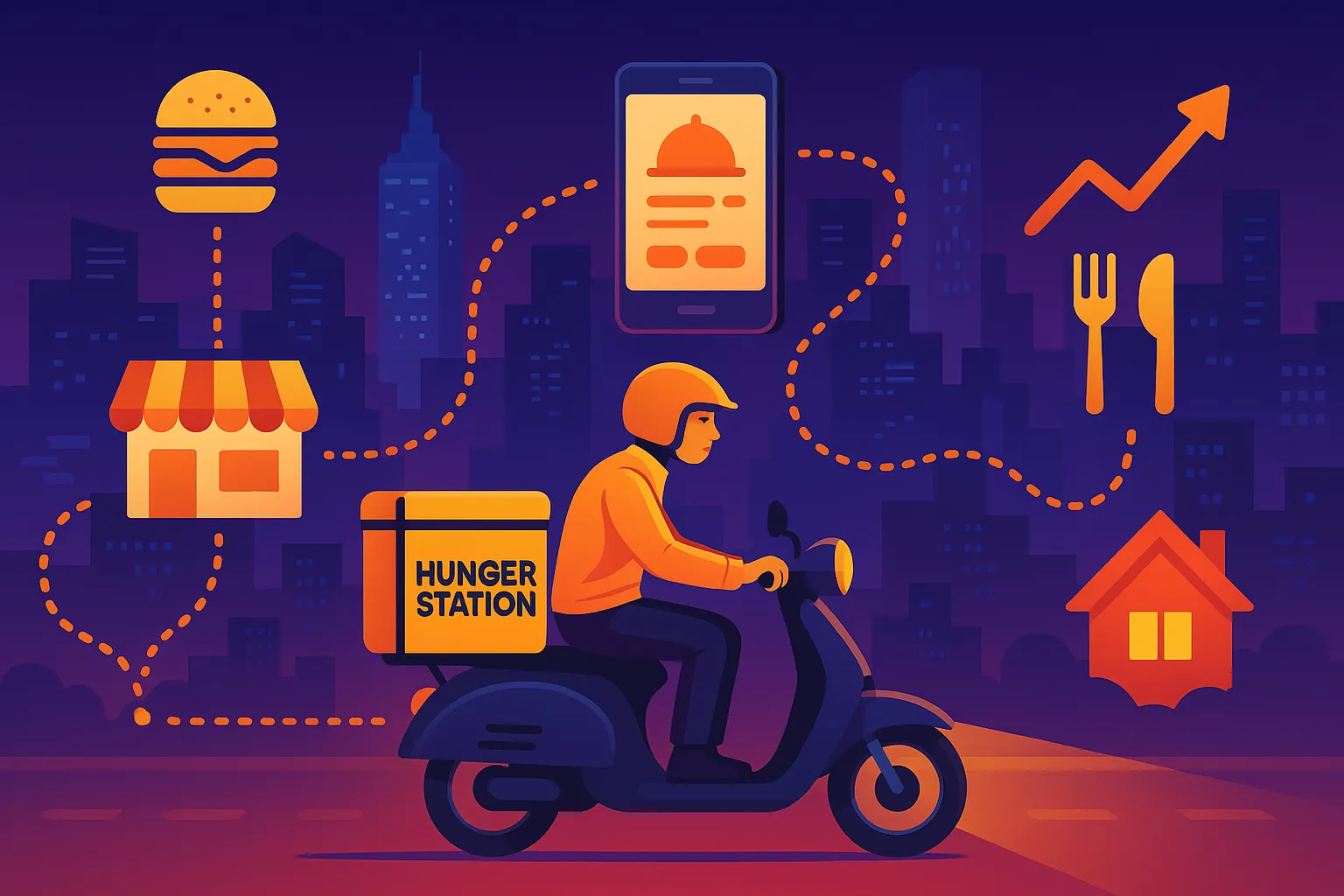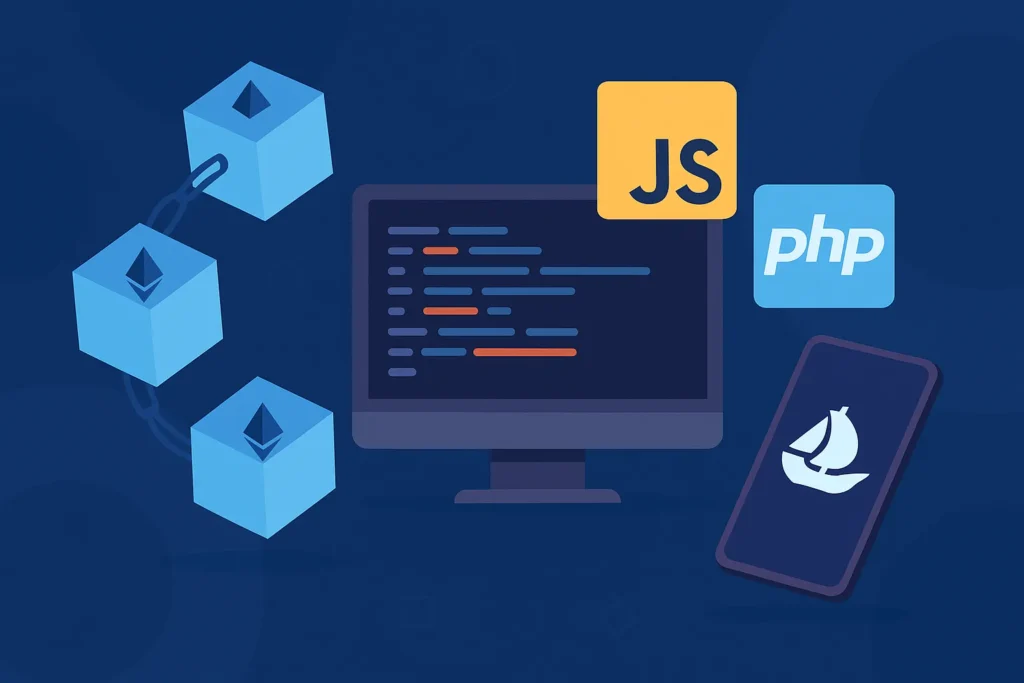Ever tried convincing your entire family on what to order for dinner? That’s tough. Now imagine handling food cravings for millions of users across Saudi Arabia — all at once. That’s HungerStation for you. From the dusty days of dialing for delivery to tapping a few icons for shawarma at your doorstep, HungerStation has reshaped how MENA eats.
And if you’re an app founder or startup daydreaming of “the next big delivery app refers Statista,” listen closely — because HungerStation didn’t just “launch and hope.” They executed a layered, high-stakes, multi-market marketing game plan.
Whether you’re building a food delivery clone app, or curious how regional giants dominate the app charts, this strategy breakdown is your cheat sheet. And yes — if you’re thinking of building a HungerStation alternative? That’s where Miracuves comes in.

What Makes HungerStation a Standout in the Food Delivery Game?
Localized Hustle Meets Digital Muscle
Unlike generic food apps trying to go global on day one, HungerStation focused deep on hyper-localization. They built trust street by street — from Riyadh to Jeddah. Their marketing didn’t scream “we’re global,” it whispered “we know your neighborhood.”
Not Just Restaurants — A Whole Marketplace
HungerStation isn’t just for food. It’s now a full-blown marketplace — groceries, pharmacies, flowers, even electronics. This allows the brand to play in multiple verticals with a single app and diversified campaigns.
Learn More: Hungerstation App Strategy – How to Dominate Food Delivery
Core Pillars of HungerStation’s App Marketing Strategy
1. Influencer Collaborations that Feel Local
Forget A-list celebrities. HungerStation taps micro-influencers who are loved in their communities. They post TikToks about late-night cravings, run Instagram Reels with coupon codes, and engage in meme culture that’s so Saudi it hurts (in the best way).
2. Limited-Time Offers & FOMO-Fueled Discounts
You’ve seen it: “Free delivery till midnight.” These aren’t random promotions — they’re tied to user behavior patterns and order peaks.
Behavioral triggers:
- 9 PM–11 PM spikes → push notification with burger deals
- Weather dips → hot beverage discounts
- Ramadan? Expect suhoor bundles.
3. Gamification for Repeat Orders
HungerStation gamifies loyalty. Users unlock badges, get access to elite-tier perks, and receive personal shoutouts in emails. These emotional hooks go beyond “buy 10, get 1 free.”
Connotation spotlight: Badges and milestones feel like achievements, not marketing — even if they totally are.
4. App Store Optimization (ASO) and Local Keyword Dominance
HungerStation owns Arabic search terms like a boss. Their App Store copy isn’t just translated — it’s transcreated (rewritten creatively for cultural impact). Add high-quality screenshots and rave reviews? Their ASO game is tight.
How HungerStation Drives Retention with Tech and Tact
Push Notifications that Aren’t Annoying
Their push copywriting is casual, personalized, and sprinkled with emojis. “Craving again? We gotchu.” It feels like a friend, not a naggy app.
In-App Personalization That Actually Works
Your last order influences your next suggestion. HungerStation uses purchase patterns, location, and even seasonal context to tweak menus and deals.
Example: If you order biryani twice in a week, don’t be shocked if biryani restaurants show up at the top of your carousel next time.
Fast, Familiar UX
- Native Arabic support
- Right-to-left navigation
- Auto-fill addresses from past orders
- 1-tap reorder
These aren’t “nice to haves.” They’re deal makers in a region where digital trust builds slowly.
Monetization Moves: More Than Just Commission Fees
- Subscription plans (like “HungerStation Plus”) with waived delivery fees
- Featured listings for restaurants to gain visibility
- In-app ad placements during seasonal events
This diversified revenue model helps offset marketing spends and maintain profitability even in saturated regions.
Build Your Own Food Delivery App — Ready to launch your HungerStation clone? With Miracuves.
Lessons You Can Steal for Your App Clone Features
- Speak like a local — not a brand manager.
- Reward loyalty early and often.
- Obsess over timing. Right deal, right time = conversion.
- Design for delight, not just function.
- Don’t chase global, dominate local first.
Learn More: Complete HungerStation App Features Guide

Conclusion
HungerStation didn’t win with a flashy ad or viral stunt — they won with relentless user empathy, cultural relevance, and smart retention strategies. Every feature and notification is designed to make life easier, faster, and a little tastier.
At Miracuves, we help innovators launch high-performance app clones that are fast, scalable, and monetization-ready. Ready to turn your idea into reality? Let’s build together.
FAQs
What makes HungerStation different from other food delivery apps?
Its focus on hyper-localized marketing and cultural alignment gives it an edge. It feels homegrown — because it is.
Is influencer marketing still effective for food delivery apps?
Absolutely. Especially when done with micro-influencers who have genuine community trust.
How does HungerStation personalize the user experience?
It uses order history, location, and seasonal context to deliver relevant offers and recommendations.
What monetization models does HungerStation use?
Aside from commissions, it earns from subscriptions, restaurant promotions, and in-app ads.
How important is ASO for food apps?
Crucial. HungerStation’s ASO helps it rank for top Arabic keywords, making discovery seamless for new users.
Can I build a similar app with these strategies?
Yes — with the right tech and go-to-market strategy. That’s where Miracuves steps in.







